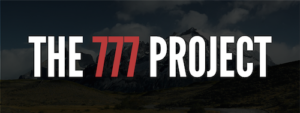Everyone talks about productivity. Productivity is great, but being “productive” doesn’t always mean you’re getting the right things done. A lot of people spend their entire day trying to answer their email faster. That doesn’t mean you’re productive. It just means you’re good at email.
What I’m interested in is becoming effective. Here’s a few things I’m doing to help with that.
Weekly, Monthly, & Quarterly Reviews
Table of Contents
I started doing this a little bit last year thanks to a push from Taylor Pearson, but I really started being consistent with this at the end of last year and the beginning of this year.
I’m still dialing it in, but the main thing it did for me was to help me close the gap.
I was finding I was doing a great job of saying what I wanted to do. And I felt like I did most of it. But I never quantified what exactly the size of the gap was.
When I started implemented the review, I got an exact understanding of the gap. And it was a lot larger than I wanted it to be.
And that’s a problem.
Not because I need to get more done. But I realized in a small way, by not doing everything I said I would I was breaking promises to myself on a regular daily and weekly basis.
When you break small promises to yourself, you’ll eventually break big ones. Close the gap.
The weekly, monthly, quarterly review is the feedback loop that knocks some sense into me.
I’ll share my process on how exactly I do this later this month, but it’s a worthwhile exercises that takes 15 minutes.
Haze Over App
This app greys out all other apps than the one you’re using. This is fantastic for people like me who suffer from TMT (too many tabs) syndrome – which is definitely a thing I just made up.
It brute-forces you to focus on the thing you’re working on so you can’t just flit from task to tasks and feel “productive”, while never actually getting anything done.
It’s $1.99 for this super-simple app. No brainer.
Mid-Day Kettle Bell Breaks
I bought a kettle bell after babysitting Joe DeSena’s kettlebell one time after a cocktail party (maybe I’ll share that story another time). Since, I’ve found it’s been a great tool for random acts of fitness.
I’ll use it in between pomodoro breaks or take it outside on a loop walk to break up the day. I find that especially when I’m working at home – these breaks give me the same effect that workstation popcorn does when I’m out and about working from coffee shops. It’s also physically stresses you and gets you out of your own head – which I find particularly helpful when trying to problem solve or stuck on a primarily mental or creative problem.
Using my Calendar as a Schedule.
For a long time I didn’t “get” calendars. I thought they sucked and were just time jails trying to steal my freedom from me. Freedom meant I get to do whatever I want, right?
Jordan Peterson said something in our interview that changed things for me.
Most people treat their calendar like a tyrant. But, you should treat your calendar like a schedule of the day that you would very much like to have.
That changed my outlook. Instead of looking at calendars like tasks that I had to rebel from – I started looking at it like a proactive outline for a good day.
Instead of getting lulled into procrastination, I found I was proactively putting blocks on my calendar to workout, write or call my parents – and sticking to it. Personally, I’m using Woven for this, but the mindset shift was the biggest block that let this entire thing work for me.
Excruciatingly Doing Less
I’ve been doing less on purpose as of late. I always like I think I can do more than I think I can, but there’s always an edge.
And I find I have a tendency to tip out over the edge.
And the frustrating thing is that a lot of the time, I can do way way more than I thought I could.
Sometimes it’s time. Sometimes it’s quality. Sometimes it’s people.
But something always get sacrificed – whether you want it to or not. If you want to do what most people don’t, you have to do what most people won’t.
When people start ultras, I always tell them – you can run farther than you think you can, but you’re going to have to slow down (trade time for distance) and give yourself a chance at recovery (strength lifting and mobility work).
And if you don’t watch yourself, your body has ways of making that sacrifice for you (getting hurt, forcing you to recover, etc).
And so I’ve cut a bunch of stuff out – specifically personal stuff. Side projects. Priorities-that-weren’t. A lot of things I’ve delegated out of my own sphere in order to avoid feeling like I need to be in charge.
I’ve found I can either proactively sacrifice things or my body and work will sacrifice something on the back-end (without asking for my input).
I’d rather have input.
So even if it sucks. I’ve been choosing to do less. Not in a limiting way. But in a way that’s going to help me get to the next impossible challenge.
Two helpful questions I’ve been asking that might be useful:
- What do I really want?
- What am I willing to give up?
The second question will often let you know if you’re actually willing to go out and get #1.
That’s what I got for this post. I’ll be sharing my exact work flows for some of these over the next month. If there’s something specific you’d like to see, let me know in the comments.


Hey Joel, thank you for the article. It is very interesting and it touches multiple important points for me.
I’m looking forward to reading your posts about planning. For the recent 3 months I realized multiple things about planning:
– No need to look for a perfect planning framework. Just do it in the way you feel right at the moment and then adjust.
– It is crucial to analyze what I’ve been executing: whether the weekly plan, daily todo list or some important event.
Please keep up with good writing!
Cheers,
Stanislav